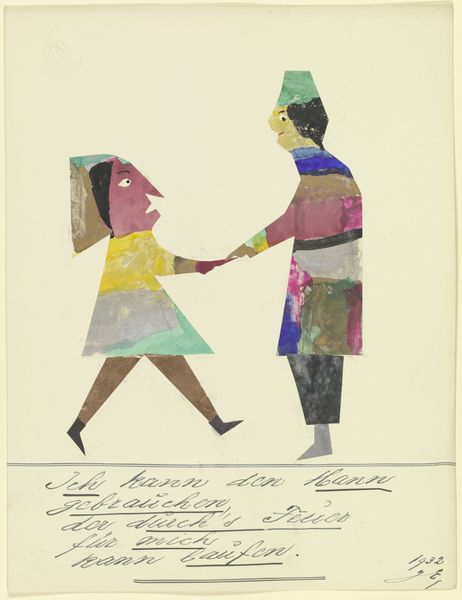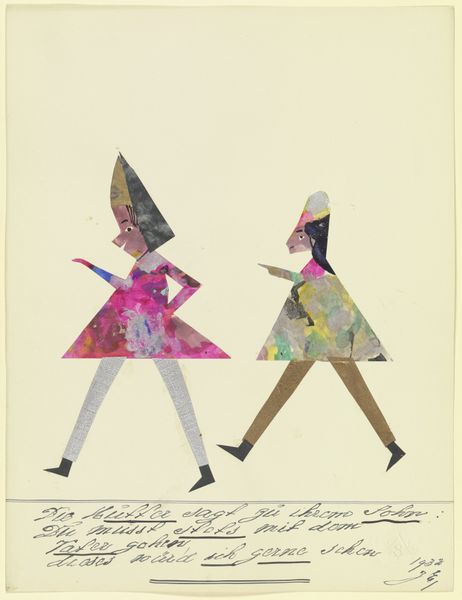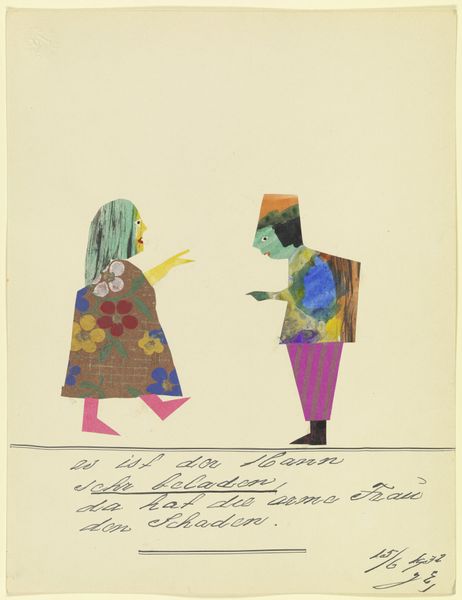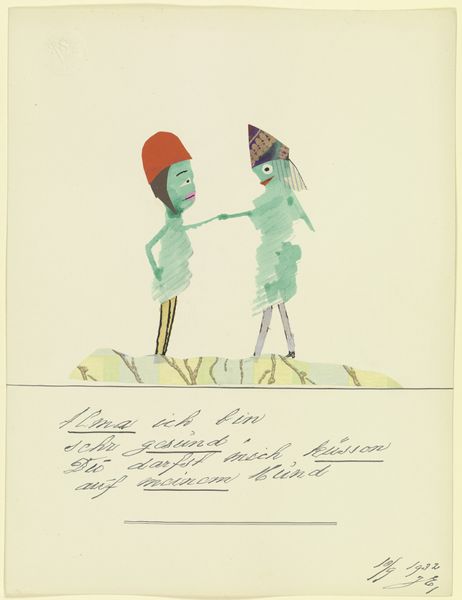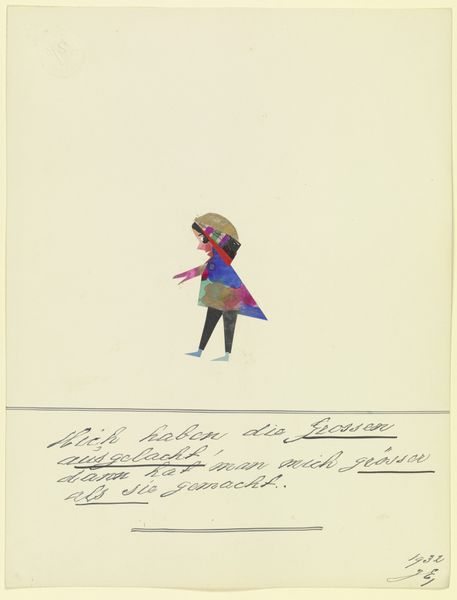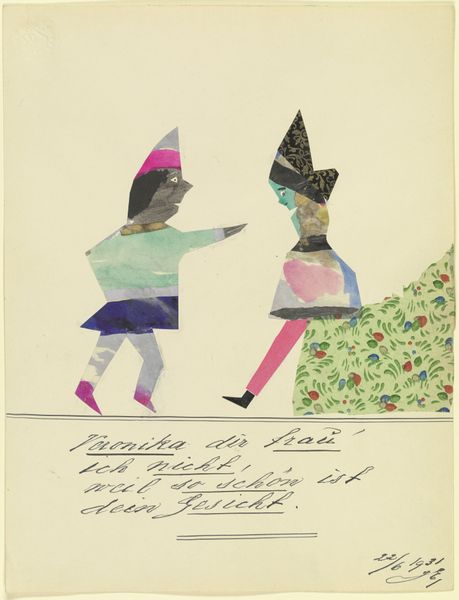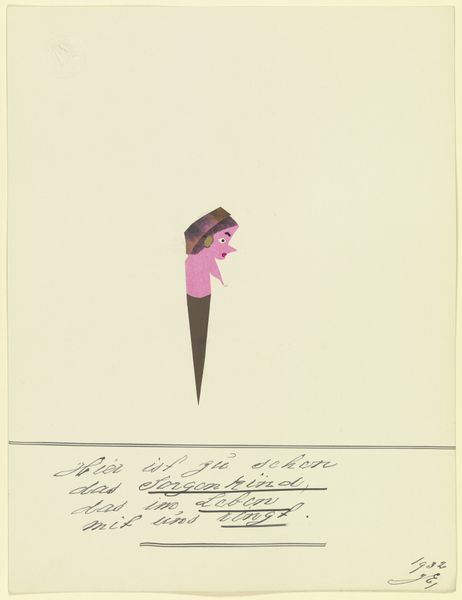
Copyright: Public Domain
Editor: This collage by John Elsas, made in 1932, is called "17342 ('Was das Glück Dir gibt mein Sohn …')". The gouache and ink on paper give it a whimsical feel, almost like a children's book illustration, but there’s something unsettling about the two figures. How do you interpret this work, considering its historical context? Curator: It's precisely that tension between childlike innocence and underlying unease that captivates me. This piece emerges from the Weimar Republic, a period of intense social and political upheaval. Elsas, a Jewish artist working amidst rising antisemitism, encodes his anxieties within this seemingly simple narrative scene. Notice the stark geometric shapes, the figures appearing almost like paper cut-outs. Do you see how that flattening perhaps speaks to a loss of identity? Editor: I do, and now that you mention it, the text beneath – seemingly a quote – feels more ominous. It looks like it is in German? Curator: Indeed. It translates to "What fortune gives you, my son, child you have nothing of it, for comes the moment when you must give fortune back." Given the rise of the Nazi party during that period, could it be about lost generational fortunes, as Elsas saw his community at risk? Perhaps this fortune represents cultural heritage and freedom. Editor: So the apparent simplicity is a veil for deeper commentary about cultural identity? It's like Elsas is foreseeing the loss of stability and the rise of something oppressive. Curator: Exactly. And consider the materials themselves—paper, ink, gouache—fragile and easily destroyed. Elsas may have consciously selected them as a metaphor for the precariousness of life during this time. What did he think the future held for Jewish children growing up in Germany? It leaves me wondering what the future held. Editor: I hadn't considered the fragility of the materials as part of the message. Seeing the piece in light of that history brings out so many layers of meaning I missed at first glance. Curator: That is why a work such as this forces us to look beyond surface aesthetics to see how lived experience profoundly shapes artistic expression.
Comments
No comments
Be the first to comment and join the conversation on the ultimate creative platform.

